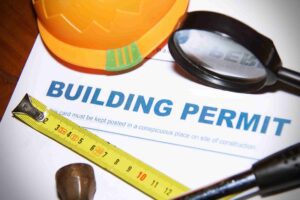How to Measure Your Yard For a Fence: Step-by-Step Guide
Installing a new fence in your yard is a practical way to enhance both security and aesthetics. However, the process requires careful planning and accurate measurements to ensure the best outcome. This article provides a comprehensive guide on how to measure your yard for a fence, highlighting the tools you’ll need, the importance of preliminary measurements, necessary precautions, and a step-by-step walkthrough of the process.
Tools You Need for Measuring
Before you start, gather all the necessary tools to facilitate accurate measurements. The primary tools you’ll need include:
- Measuring Tape: This is the most basic tool you’ll need. It should be long enough to measure the length and width of your yard, or use markers to keep accurate measurements if your measuring tape isn’t long enough.
- Wheel Measure: This is a practical alternative to a measuring tape, especially for large yards. Wheel measures are simple to use and can quickly give you an accurate measurement of distance.
- Graph Paper and Pencil: You will need these to sketch your yard layout and marking the measurements.
- String and Wooden Stakes: These are helpful for marking out the fence line and getting a visual representation of where the fence will go. You can also use a rock or paint.
- Level: This tool is not essential but can be useful to ensure that the fence will be level, especially on sloped terrain.
Why Accurate Measurements Matter
When planning for a fence installation, the importance of accurate measurements can’t be overemphasized, primarily for three reasons.
Firstly, proper measurements assist in cost estimation. By accurately measuring, you can determine the amount of fencing material needed, which directly impacts the overall cost of the project.
Secondly, taking precise measurements ensures that the fence fits perfectly in the designated area, paving the way for proper fence installation.
Lastly, compliance with regulations is an essential aspect that cannot be ignored. Various zoning laws in many regions dictate the height and location of fences. Therefore, taking accurate measurements can preempt potential legal complications and unnecessary modifications in the future.
Precautions to Take When Measuring For A Fence
Before measuring your yard, consider the following precautions:
Check for Utilities: Always check for underground utilities before digging for your fence posts. Most locations have a “call before you dig” hotline that will mark utility lines for you.
Review Property Lines: Be sure to confirm your property lines before setting up a fence to avoid disputes with neighbors or legal complications.
Consider Gates and Obstacles: Remember to plan for the placement of gates and any potential obstacles like trees, landscaping features, or buildings.
How to Measure Your Yard for a Fence:
With all the preliminary aspects handled, here’s the step-by-step process on how to measure your yard for a fence:
- Sketch a Layout: Start by creating a rough sketch of your yard on a piece of graph paper. Mark out where you want the fence to go, the location of gates, and any potential obstacles.
- Mark the Corners: Using wooden stakes and string (or paint/rocks), mark out the corners of where your fence will go at a 90° angle. This gives a physical representation of the fence line and can help you visualize the finished product.
- Measure the Perimeter: Use your measuring tape or wheel measure to get the dimensions of each side of your fence line. Record these measurements on your sketch.
- Plan for the Gates: Decide how wide you want your gate(s), and where you want them when planning your measurements.
- Double-Check Your Measurements: Always double-check your measurements for accuracy before purchasing materials or beginning installation.
Other Factors to Consider When Measuring For a New Fence:
- Know What Type of Fence You Want Before Starting: A vinyl picket fence versus a wood fence, chain link fence, aluminum fence, wrought iron fence, etc. are all very different types of fencing; each with differences in height, distance between posts, fence panels, etc. That’s why it’s crucial to determine what type of fence you want for your yard before you start.
- Calculate Materials: Based on your measurements, calculate how much fencing material you will need.
- Account for Fence Posts: Remember to account for fence posts approximately every 6-8 feet. Depending on the type of fence, the distance between posts may vary. Have you ever considered using landscape timbers for fence posts?
Consider Hiring a Fence Company
On paper, measuring for and installing a new fence can seem relatively straightforward. But there is a lot of math involved in this process – on top of the physical labor, tools, materials and time it takes to install a fence the right way. We also have a great article on whether or not it’s cheaper to build a fence yourself.
If you aren’t sure whether you have the expertise to properly measure and install a new fence, it’s always a good idea to speak with a professional fence company.


